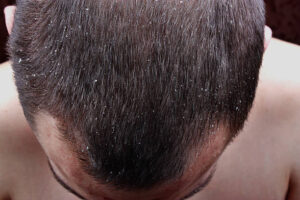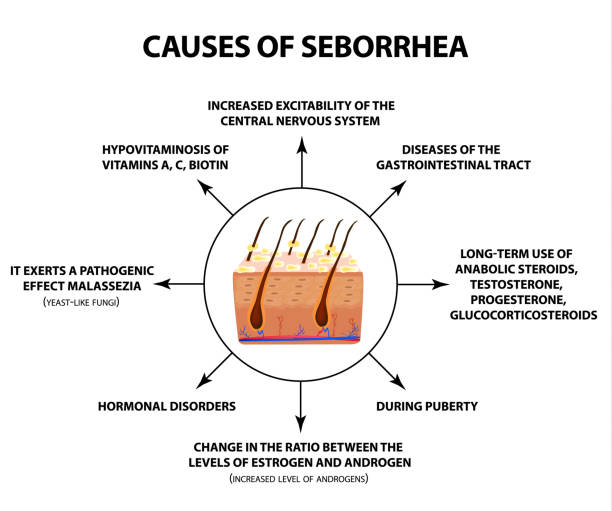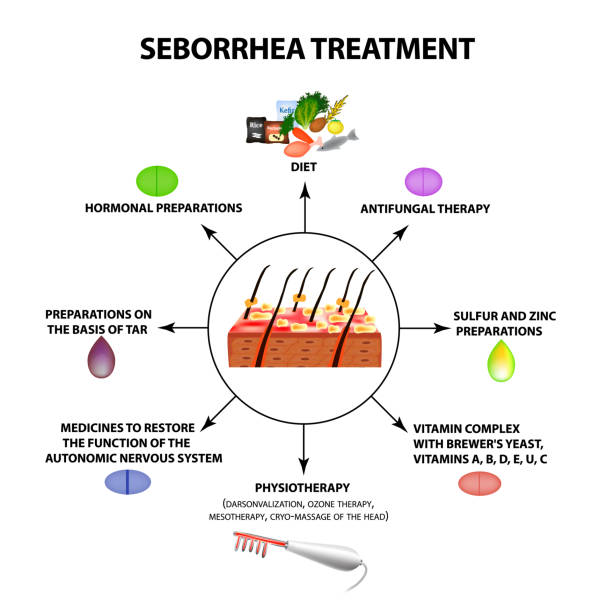Seborrhea and baldness treatment in Lahore Pakistan is performed by a foreign qualified specialist Dr. Ahmad Chaudhry at our clinic. Seborrheic dermatitis is a skin condition that causes oil to build up in the scalp and hair follicles. Seborrhea and baldness are caused by an overproduction of sebum, or natural oil, in the skin. Seborrhea dermatitis is common in people with oily skin or who use many products with high levels of alcohol. In some cases, it can also be triggered by stress or other environmental factors such as poor nutrition or excessive sun exposure. Seborrhea may result in flaky, itchy skin and baldness if you cannot treat it effectively. The good news is that there are many treatment options available for this condition, including prescription and over-the-counter medications and complementary therapies like acupuncture.
What causes seborrheic dermatitis?
Seborrheic dermatitis (SD) is a common condition that causes dry, scaly patches on the scalp and face. It’s also known as dandruff, Seborrhea, or seborrheic eczema. The main cause of this condition is the excessive production of oil glands in the scalp. However, a few factors increase the risk of Seborrhea and baldness. some of them are:
- The immune system plays a big role in seborrheic dermatitis as well—it’s not just people who suffer from this condition who have certain genes that make them more prone to getting it.
- It is most common in people with dandruff or psoriasis.
- The cause of seborrheic dermatitis is unclear, but research shows that genetics are likely a factor. Some people inherit a genetic predisposition for SD from their parents or grandparents,
- Oxidative stress: One theory suggests that SD may be caused by oxidative stress. Oxidative stress occurs when there is an imbalance between the production of free radicals and antioxidants in the body.
- Seafood-intolerant people may be more prone to developing the disease because they cannot properly metabolize the proteins found in shellfish and other seafood.
What are the signs and symptoms of seborrheic dermatitis?
- The main sign of SD is dry, flaky scalp and hair loss.
- Other signs include itching and scaly red patches on your skin.
- Irritated eyes or an inflamed nose from scratching at it too much (this symptom can be caused by dry skin).
- You may also experience scaling around your nose area or under your eyes.
- Due to dandruff or excess oil production, your hair may also be greasy and untidy (Seborrhea).
- Dandruff
Seborrhea and baldness treatment in Lahore Pakistan
If you have SD, several treatment options are available, including over-the-counter medications and natural treatments.
Over-the-counter treatments can help relieve symptoms of seborrheic dermatitis, including itching and irritation.
Medicated shampoos: Medications such as ketoconazole (Nizoral), coal tar shampoo, and selenium sulfide shampoo may help control symptoms of seborrheic dermatitis. These products are available over-the-counter at drugstores and pharmacies without a prescription.
Calcineurin inhibitor cream: Using a topical calcineurin inhibitor cream like tacrolimus ointment helps improve the appearance of your skin by inhibiting inflammation caused by chronic inflammation associated with the disease.
Seborrheic dermatitis is a common condition that causes the skin to become red, inflamed, and itchy. It can be caused by any skin irritation from the sebum produced by the sebaceous glands. The most common cause of seborrheic dermatitis is the excessive use of soap and detergents. Overusing these products can irritate your skin and cause redness, itching, and scaling of the scalp.
Avoid soap and detergent: You should always try to avoid using soaps with fragrances or dyes, as they may irritate your scalp. If you have sensitive skin, try using natural soaps or shampoos made from olive oil or aloe vera. You can also try using apple cider vinegar to cleanse your hair but avoid getting it into your eyes as it can sting them badly!
Eat a healthy diet: A diet high in sugar and refined carbohydrates can stimulate yeast growth. Avoid sugar and refined carbohydrates such as pasta, white bread, white rice, and potatoes. Instead, eat whole grains such as brown rice or quinoa.
Wash your hair regularly: If you’re prone to SD on your scalp, then wash your hair at least twice a week with an only mild shampoo made for sensitive skin like Head & Shoulders Anti-Dandruff Shampoo or Dove Naturals Mild Lavender Shampoo; avoid harsh shampoos designed for oily hair.
Conclusion:
Seborrhea and baldness is a common condition that causes oily and scaly patches on the scalp and face. Often, Seborrhea can be treated with topical prescription medications and over-the-counter products such as anti-fungal shampoos, conditioners, and moisturizers, or by visiting your dermatologist. For more serious cases, you may need to consider prescription medications.
Who is the best for Seborrhea and baldness treatment in Lahore Pakistan?
Dr. Ahmad Chaudhry is a foreign qualified specialist and experienced doctor, best in the town and you can get free consultation from him.
People also search
| Best hair fall treatment | Best hair restoration specialist Lahore |
| 2500 grafts result | Fue 2851 grafts result |





